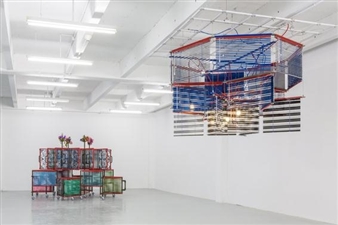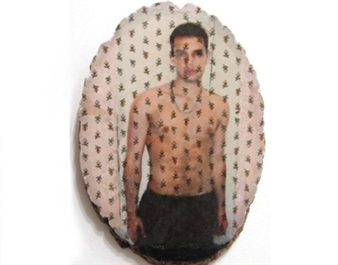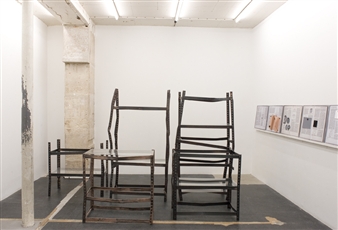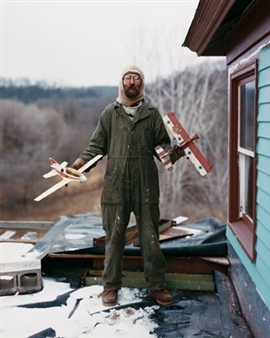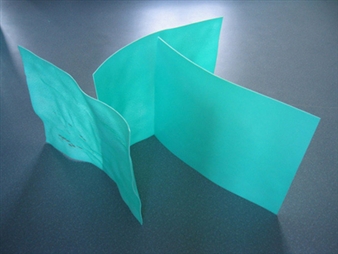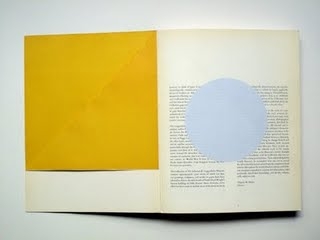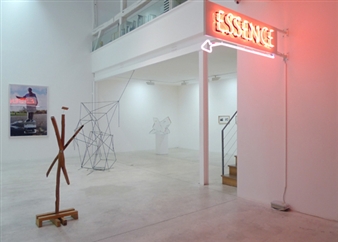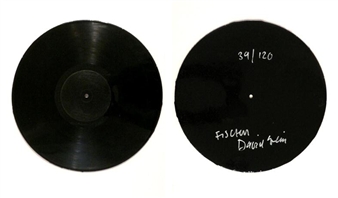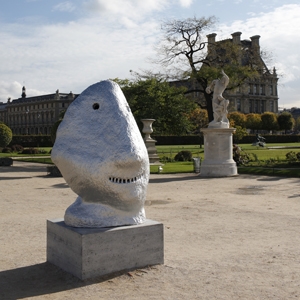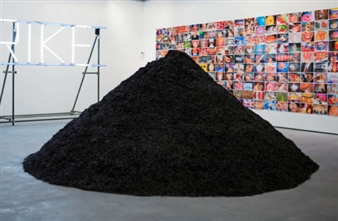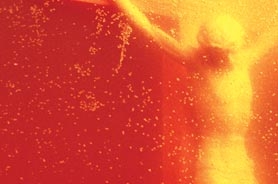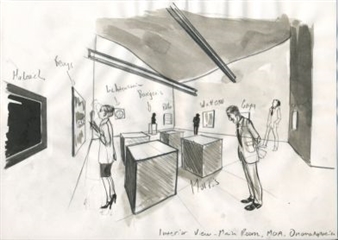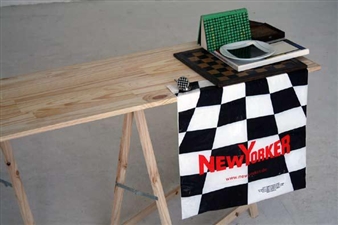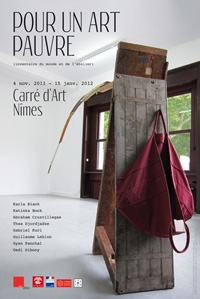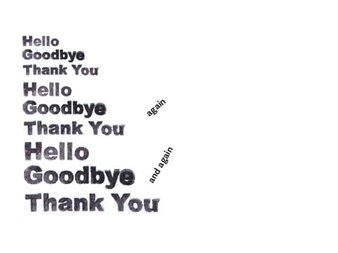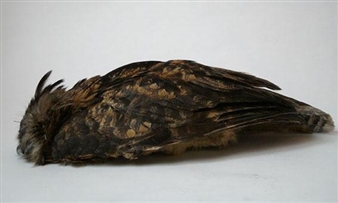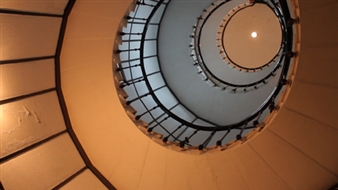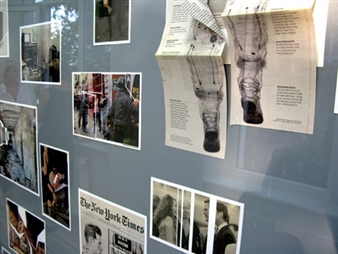La matière des mots
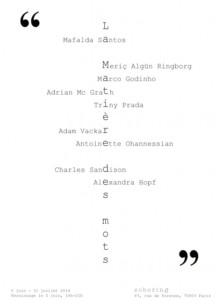
Galerie Sobering, Ile-de-France, Paris, 06/05/2014 - 07/31/2014
ABOUT
Greek philosophers called « material » every substance that was likely
to experience changes through nature, art or other causes. « In this
sense they not only called brass the material of a statue, and timber
of a boat, but letters and syllables were called the material of words;
words or simple terms, the material of propositions; and propositions
themselves the material of syllogisms. »1
In Greek « γράφειν » is commonly translated by the verb « to write »,
but more precisely it means « to graze », « to scratch », « draw
signs », « to engrave ». The semantic is the same in the Latin
etymology. The essence of the word « to write » reflects a concrete act
that reveals an interaction with the material. Hence, writing’s
materiality is intrinsically connected to the action of writing. The
materiality here, refers to the material used by the artist, that
determines the action of writing.
Writing involves an action, a posture, a movement, and a material. The
materiality is actively involved in the writing process and can be
understood as the sum of the elements that compose the material
context.
The material of words presents a selection of artists that, while
having chosen the writing medium, have brought a particular attention
to the expressive strength of the word in its relationship with the
materiality.
« The writing is a physical effort »2
that is the result of the
friction with the material, which is not the case anymore with the
writing on computer. Adam Vackar pushed this reflection to its paroxysm
by entering some words of Karl Marx’s book The Capital inside a poem’s
generator, giving finally place to neo-Dada poems.
Charles Sandison also uses IT tools to establish a new vocabulary, from
algorithms and programming language. « The physical space and the gaps
between the words serve as pronouns and verbs. I use this articulation
between the meaning, the words and between the spaces as a way to
escape the authoritarian power of the language. » Marco Godinho, chooses to present a writing in movement, that
accompanies the visitor according to its movements, with the process of
lenticular printing. The artist presents four corpuses of twelve
sentences that are related to the interactions of the various
temporalities.
Triny Prada writes with the wireframe technique, which evokes her
memories of the « mola » tapestries, completely sewn with thread.
Mafalda Santos, uses the stamp, which alterations on the text
participate in the construction of a story about time, perception and
cognition.
In Antoinette Ohannessian’s work, writing’s materiality is evoked by
the imprint of a material on an other one. The artist uses butter on
wood in order to reveal a quotation of her daily life. The analysis of
the ordinary implies a phenomenological approach.
The audio narrative, presented by Meriç Algün Ringborg questions the
action of writing and could be described as a creative introspection of
the author. The writer speaks about the difficulty to write, the many
steps of the redaction, the sructure of sentenses, the imposed rules as
well as the part of the narrator. « I was toying with the idea of
writing a book. A work of fiction. I didn’t know what I was doing. And I have to say. The first sentence is so hard to compose. » The
dematerialization of the word through the oral reading’s process faces
the concrete result of the book’s production.
Adrian Mc Grath revisits the writing’s materiality in its connection
with paper. The artist composes the structure of his sheet, by drawing
lines and margins, and then writes the text on it, which evokes the
relations between two beings and the perception of this link according
to the paradigms of each individual.
On the other hand, Alexandra Hopf works on posters’ texts related to a
fictional exhibition.
The material of words or more broadly, the materiality of writing,
influences the perception of the text as much as it has an impact on
the modes of expression of the artist.
1 HARRIS, James, Hermes, or A philosophical inquiry concerning universal grammar, 1795.
Annotated version by François Thurot.
2 BECKER, Howard S., Writing for Social Scientists, 1986.
For More Information
Greek philosophers called « material » every substance that was likely
to experience changes through nature, art or other causes. « In this
sense they not only called brass the material of a statue, and timber
of a boat, but letters and syllables were called the material of words;
words or simple terms, the material of propositions; and propositions
themselves the material of syllogisms. »1
In Greek « γράφειν » is commonly translated by the verb « to write »,
but more precisely it means « to graze », « to scratch », « draw
signs », « to engrave ». The semantic is the same in the Latin
etymology. The essence of the word « to write » reflects a concrete act
that reveals an interaction with the material. Hence, writing’s
materiality is intrinsically connected to the action of writing. The
materiality here, refers to the material used by the artist, that
determines the action of writing.
Writing involves an action, a posture, a movement, and a material. The
materiality is actively involved in the writing process and can be
understood as the sum of the elements that compose the material
context.
The material of words presents a selection of artists that, while
having chosen the writing medium, have brought a particular attention
to the expressive strength of the word in its relationship with the
materiality.
« The writing is a physical effort »2
that is the result of the
friction with the material, which is not the case anymore with the
writing on computer. Adam Vackar pushed this reflection to its paroxysm
by entering some words of Karl Marx’s book The Capital inside a poem’s
generator, giving finally place to neo-Dada poems.
Charles Sandison also uses IT tools to establish a new vocabulary, from
algorithms and programming language. « The physical space and the gaps
between the words serve as pronouns and verbs. I use this articulation
between the meaning, the words and between the spaces as a way to
escape the authoritarian power of the language. » Marco Godinho, chooses to present a writing in movement, that
accompanies the visitor according to its movements, with the process of
lenticular printing. The artist presents four corpuses of twelve
sentences that are related to the interactions of the various
temporalities.
Triny Prada writes with the wireframe technique, which evokes her
memories of the « mola » tapestries, completely sewn with thread.
Mafalda Santos, uses the stamp, which alterations on the text
participate in the construction of a story about time, perception and
cognition.
In Antoinette Ohannessian’s work, writing’s materiality is evoked by
the imprint of a material on an other one. The artist uses butter on
wood in order to reveal a quotation of her daily life. The analysis of
the ordinary implies a phenomenological approach.
The audio narrative, presented by Meriç Algün Ringborg questions the
action of writing and could be described as a creative introspection of
the author. The writer speaks about the difficulty to write, the many
steps of the redaction, the sructure of sentenses, the imposed rules as
well as the part of the narrator. « I was toying with the idea of
writing a book. A work of fiction. I didn’t know what I was doing. And I have to say. The first sentence is so hard to compose. » The
dematerialization of the word through the oral reading’s process faces
the concrete result of the book’s production.
Adrian Mc Grath revisits the writing’s materiality in its connection
with paper. The artist composes the structure of his sheet, by drawing
lines and margins, and then writes the text on it, which evokes the
relations between two beings and the perception of this link according
to the paradigms of each individual.
On the other hand, Alexandra Hopf works on posters’ texts related to a
fictional exhibition.
The material of words or more broadly, the materiality of writing,
influences the perception of the text as much as it has an impact on
the modes of expression of the artist.
1 HARRIS, James, Hermes, or A philosophical inquiry concerning universal grammar, 1795.
Annotated version by François Thurot.
2 BECKER, Howard S., Writing for Social Scientists, 1986.
